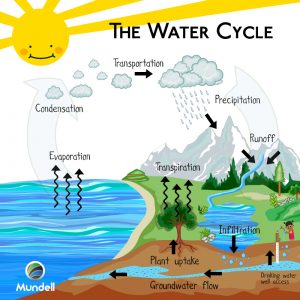What is groundwater?
Groundwater starts as rain and melted snow. It seeps into the ground from the surface through soil, sand, gravel and rocks. Water collects in small pockets in between the sand and gravel (or “pores”) underground. See this animated video for more information.
Am I in a located in wellfield?
Check the maps to find out.
What is a wellfield?
The land above and surrounding wells drilled into an aquifer is called a “wellfield”. Water collecting on the surface in the wellfield and surrounding area seeps through the ground into an aquifer. The area where the surface water seeps into the ground, to the aquifer and recharges the wells is called a “wellfield protection area”.
What is a wellhead?
A wellhead refers to the location of a pumping well that supplies drinking water. In other programs, wellfields are called wellhead protection areas (WHPAs).
Why should I care about a wellfield?
For many years we believed that our groundwater was protected from contamination because it is underground. We now know that this is not completely true.
If we are not careful, we can contaminate our precious aquifers which is our water supply. People living and working in wellfields need to be especially careful to keep contaminants off the ground where they can seep into our underground drinking water supply.
What is an aquifer?
A large ground water body that is tapped by wells and pumped to the surface for use is referred to as an aquifer. Marion County has large sand and gravel aquifers that are valuable drinking water sources.
How can wellfields be contaminanted?
Chemicals used in homes, business, industry, and agriculture can all contaminate groundwater if they are spilled, leak, or are poured onto the ground because they slowly seep into groundwater.
Where can I learn more about groundwater and find resources for kids?
Check out our “More about groundwater” blog post for websites and materials for all ages.

